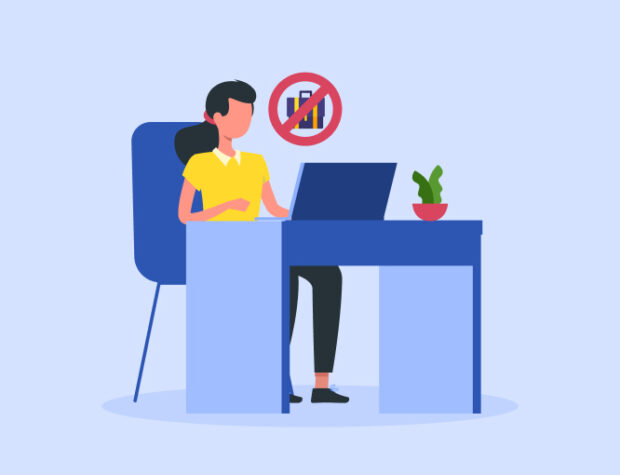Email etiquette of Corporate world – a noob’s guide
 Many of you may have now started with your summer internship and after initial few days of settling down and feeling happy, the actual work may have now begun. As goes with any real life project, you need to interact with a variety of people in the organization, including your manager, people in your team, colleagues in other departments, senior management, external vendors – the list goes on!
Many of you may have now started with your summer internship and after initial few days of settling down and feeling happy, the actual work may have now begun. As goes with any real life project, you need to interact with a variety of people in the organization, including your manager, people in your team, colleagues in other departments, senior management, external vendors – the list goes on!
Soon you’d realize that email is the most widely used form of communication in an office environment because its the most convenient. But if not done right, your email etiquette (or rather lack of it) may jeopardize your project at the least and your internship at the worst! Here are the top 10 email etiquette which, if followed, will not only save you from any potential trouble but would add a golden feather to your communication skills.
1. Do NOT use SMS language or shorthand while writing a professional email: – We have said this a million times before and would say it again lest you forget. Your boss and your colleagues are not your college buddies and it is VERY unprofessional to use SMS language (plz, u, der, den, kewl, lolz etc.) in a corporate environment. Emails full of such language are least likely to elicit any response and also create a poor image of you in front of recipients.
2. Keep it short and to the point: – Longer the email, less are the chances that it would get read and replied to. Nobody likes has time to read stories in the days of 140 characters tweets. Usually any email longer than 8-10 lines becomes a burden to read and there are many ways to shorten it.
- Present the key summary in the text while details can be provided in form of an attachment (name your attachments properly)
- Write bullet points instead of paragraphs
Also it is better to state the objective of the email upfront and then provide the supporting information than other way round. Let the reader know in first 2 lines why should he bother to read rest of the email.
3. Keep the subject descriptive: – Again the idea is to let the reader know upfront on what to expect in the body of the email so that he/she can decide on urgency or relevance of the matter.
4. ALWAYS spell check your email: – an email with poor vocabulary and spelling mistakes can spoil all the good impression you may have created with your hard work. Use technology to your advantage, spell check before you send.
5. Pay attention to who all the email needs to be addressed to: – This one is tricky. The rule of thumb is that anyone who needs to know the content of the email (purely from being informed point of view) should be kept in CC and everyone who needs to act on the email should be kept in “To” field. Avoid marking the world on the email; similarly when replying to an email which originally had multiple people copied in, do consider who all need to be copied in your reply.
6. Avoid large attachments in email: – Not only they choke the network but also have the risk of not getting delivered to all the recipients due to mail size restrictions their service provider may have placed. If all the recipients are on a common network, try sending the links to the attachment.
7. Maintain a trail of the communication: – While replying to an existing email, do not start a fresh email chain but reply on the top of existing trail of emails itself. This way everyone has the entire context on the conversation and you also can save the hassle of having to reproduce the entire earlier conversation in your email.
8. Clear your inbox regularly: – A clean inbox is not only a visual delight but also indicates your work efficiency. Reply to the emails as soon as possible (preferably within 48 hours) or let the person know the date by when you would be able to reply in case it’s going to be later than 48 hours
9. Tone of email, err on the conservative side: – Emails written with best of the intentions can be construed as rude or accusing or demanding because the reader cannot see or hear you and you do not know what mood he/she is in while reading the email. So it’s always advisable to make your emails extra polite if you think that would help – do NOT sound cheesy though. Similarly if you are writing a difficult/harsh email, it works best to speak to the person before or immediately after writing the email to ensure it is taken in the right spirit.
10. It’s ok to follow up: – Its usually an acceptable/expected standard to follow up on email after 48-72 hours if your original email has not been responded to yet. The follow up can be over email or over a phone call. Following up too soon may be seen as rude (in case of urgent requests, a phone call works lot better) and following up too late makes the email seem less important.
11. Turn ‘Out of the office’ setting on when away from office: – This one is a bonus tip. In case you are going to be away on holidays, training etc. and would not be checking your emails regularly, turn the auto responder on and let the others know when can they expect a reply from you and who else can they reach (usually your manager) in your absence in case their email requires urgent response.
With these simple, yet often ignored, good practices you can ensure that everyone if office appreciates you not only for your technical skills but also for your soft skills. Now who would not want that?
Have you ever committed any email blunder, share your experience in the comments below.
Image credit: – http://cloudfront.qualtrics.com/blog/wp-content/uploads/2010/07/email_slingshot.jpg



